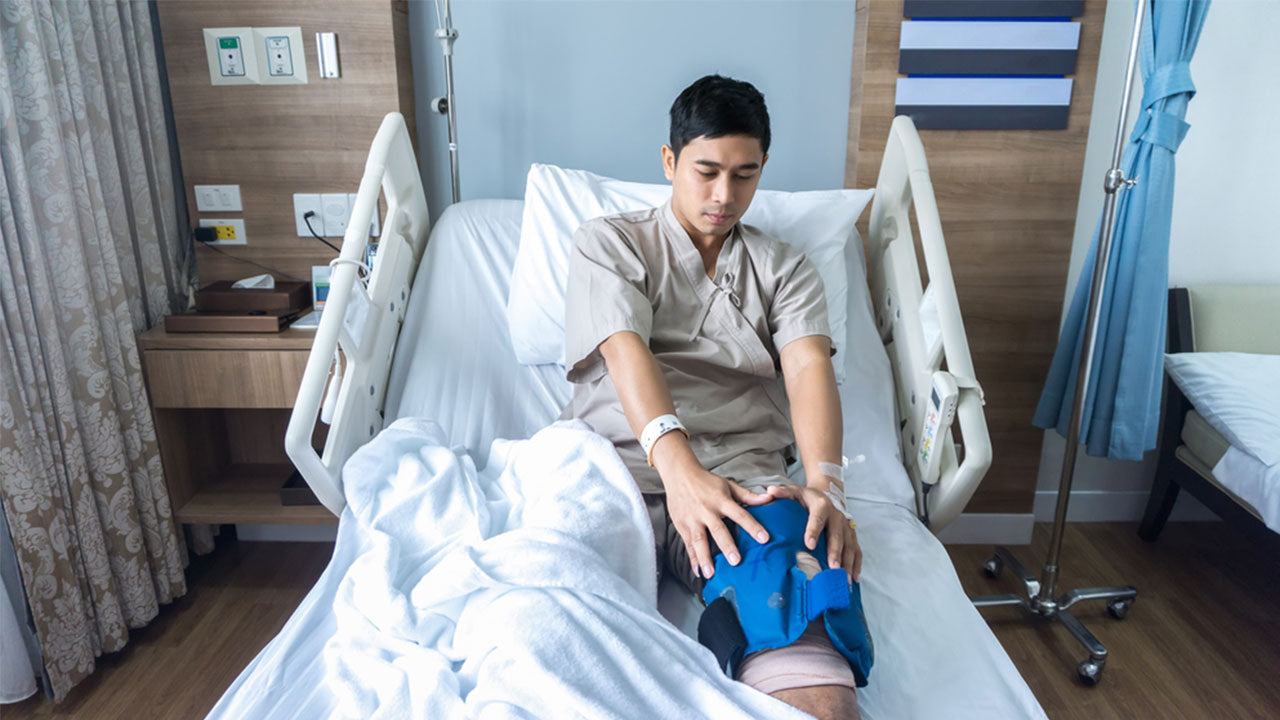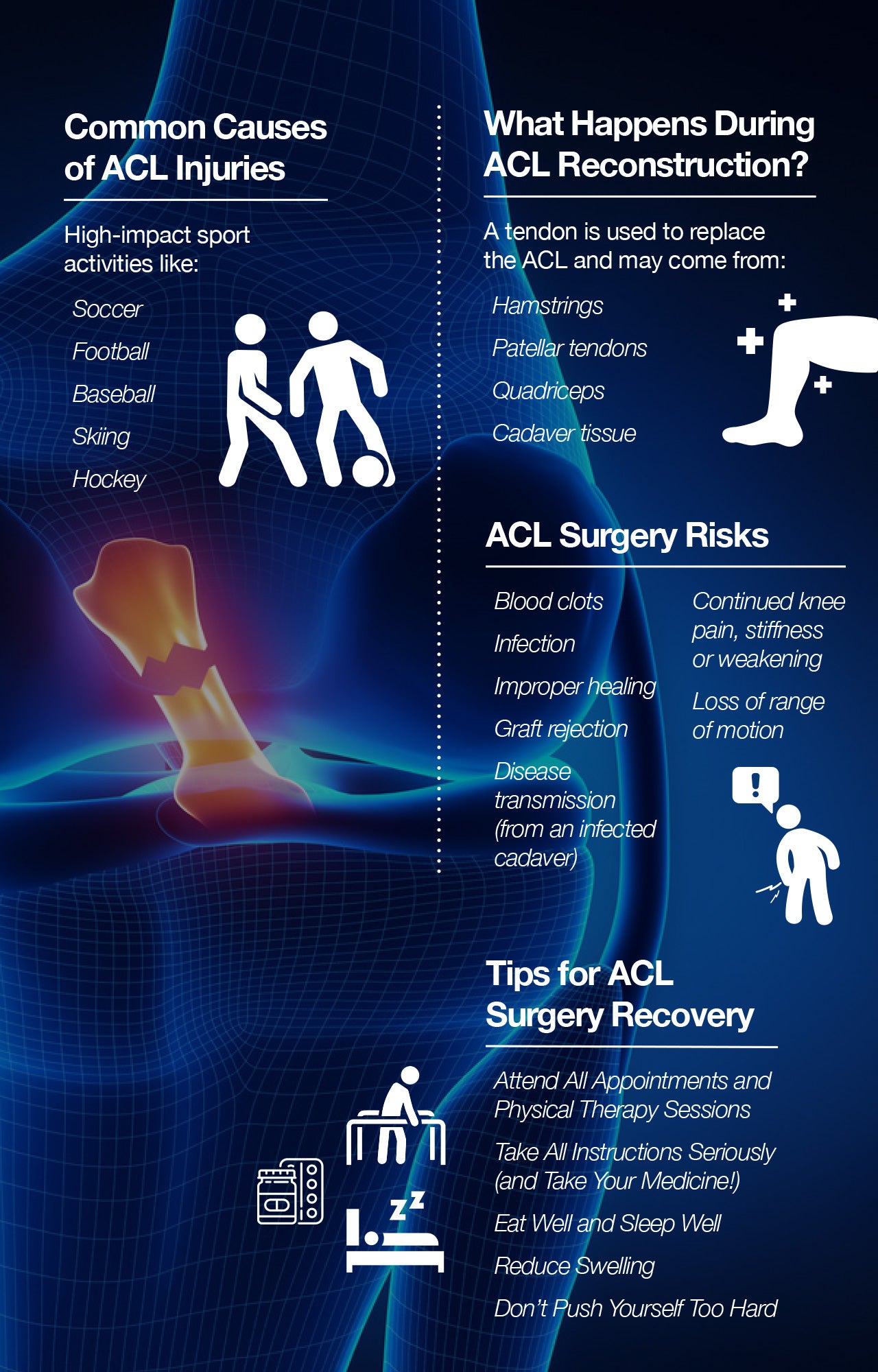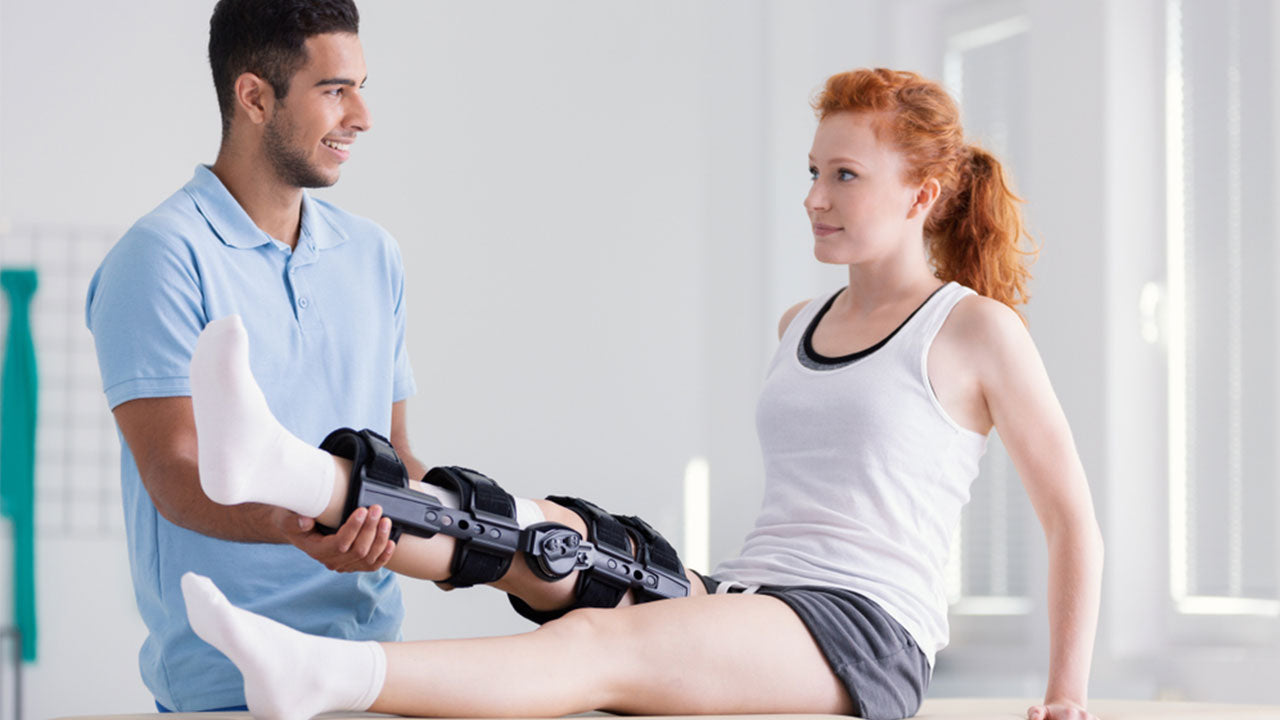ACL Surgery Recovery: Top 5 Tips to Accelerate Healing
 By: by Amino Science
By: by Amino Science

Your ACL, or anterior cruciate ligament, is one of four major ligaments in your knee, and it's also the one most frequently injured due to sports and accidents. If an ACL injury is too severe, ACL surgery will be performed to help restore strength and stability to the knee. Give your knees a rest and keep reading for the details of how the ACL works, what surgery may involve, and how to accelerate your recovery timeline once you've returned home and are ready to get back on your feet.
The ACL's Position and Uses
Bones, cartilage, and ligaments, specifically your femur (thigh bone) and tibia (shin bone), all meet at your knee joint. Ligaments are the structures that connect bones to other bones (unlike tendons, which connect bone to muscle). The four ligaments that hold this whole joint together are the:
- Anterior cruciate ligament (ACL): Your ACL runs diagonally between your femur and tibia, providing side-to-side rotation stability and keeping the shin bone from slipping in front of the thigh bone.
- Lateral collateral ligament (LCL): The LCL runs from the thigh bone to the shin on the outside of the knee joint.
- Medial collateral ligament (MCL): Your MCL is a tissue band inside the knee which connects your thigh bone to your shin bone.
- Posterior cruciate ligament (PCL): Our PCL connects thigh to shin bone and is positioned at the back of the knee. It is injured much less frequently than the ACL.

Common Causes of ACL Injuries
Sports medicine sees a lot of ACL tears, mostly because an ACL knee injury is commonly caused by high-impact sport activities like:
- Soccer
- Football
- Baseball
- Skiing
- Hockey
The American Academy of Orthopaedic Surgeons (AAOS) reports that most of these injuries happen when players collide, and there are nearly 200,000 ACL tears and injuries diagnosed in the United States each year. About half of those patients will undergo ACL reconstructive surgery, which is somewhat invasive but recommended for athletes, young and active patients, people with chronic knee pain due to injury, or those who have limited or compromised range of motion without the procedure. Not everyone will choose ACL reconstruction, but for those who do, there is an extended recovery process, which often involves taking instruction from a physical therapist.
What Happens During ACL Reconstruction?
Speak with your doctor and your surgeon about the specifics of your unique case, but in general, a fully torn ACL needs to be replaced with a tendon from somewhere else. Common sources for these replacement tendons are:
- Hamstrings: This tendon connects your knee to the muscles in the back of your leg.
- Patellar tendons: These tendons attach your kneecaps (patella) to your shin bones.
- Quadriceps: From the front of your thighs, this graft is usually a last resort if other tendons do not take.
- Cadaver tissue: This is an allograft, a tendon taken from a dead body.
Your doctor will confer with you on which option is best, what is involved in receiving anesthesia, and the pre- and post-operative instructions issued for the sake of your health and in service of an ideal surgical outcome.
ACL Procedure and Risks
Let's run through what a general ACL surgery entails, plus certain common risks your health care providers will review with you before operating.
The Procedure
Once you are placed on an IV and under sedation, the graft tissue is extracted first (if it is not coming from a cadaver), and then given "bone plugs" to anchor it to the bones in the knee.
Next, the ACL is removed and the area cleaned with the assistance of a thin camera (this is called arthroscopy). A drill is then used to create small holes that the bone plugs will be attached to using screws, posts, or staples.
Once the new ligament is in place, your surgeon will test that the range of motion is adequate and the ligament secure, then stitch and dress the wound before outfitting it with a stabilizing brace. Should you need extra steps during this procedure, such as a meniscus repair, the surgery may take longer, but you should be able to return home at the end of the day.
The Risks
Surgical procedures all involve a certain amount of risk:
- Blood clots
- Infection
- Improper healing
- Graft rejection
- Disease transmission (from an infected cadaver)
- Continued knee pain, stiffness, or weakening
- Loss of range of motion
Evaluate your health and your risk factors with your surgeon before taking on ACL reconstruction surgery. The AAOS states that between 82% and 90% of these surgeries are successful, with patients regaining full range of motion and knee stability.
Tips for ACL Surgery Recovery
The recovery timeline for such a serious surgery can take months, an average of 8 months for about half of the athletes who undergo it. Post-op recovery time depends on your age, overall health, the success of your surgery, and your ability to get physical therapy. You may experience pain and several months of restricted activity with the aid of a knee brace, a crutch, or perhaps even a wheelchair. Here are some tips to help accelerate your healing and get you back on your feet faster.
1. Attend All Appointments and Physical Therapy Sessions
The best way to ensure your recovery is going well is to make sure the experts are looking it over regularly. That means attending every follow-up appointment even if you're feeling fine and going to physical therapy for as long as possible. Your doctor may be able to spot issues in your recovery before they become infections or rejections, so if you have to miss an appointment, be sure to reschedule. Be sure also to tell your doctor if you experience any pain, fever, or discomfort that doesn't seem right: it could be the first sign of a serious complication to your knee surgery.
Likewise your physical therapist will not only help you regain strength in your leg but will also give you advice on stretching, moving, and pivoting as you heal and return to your former activity level so you won't experience a reinjury. Be sure to take advantage of all the physical therapy sessions your health insurance covers.
2. Take All Instructions Seriously (and Take Your Medicine!)
Much like the recommendations in the first tip, it's important to listen to all the medical advice your doctor gives you, be it written or verbal, and to take all your medications as prescribed and to completion. The first 2 weeks post-surgery will probably feel pretty lousy, but after that you may be tempted to lapse on particulars like pain medication.
Pain meds are not issued lightly, and they are meant to do more than just dull the pain; they're also meant to help you recover faster. Physical therapy is likely to be painful too, and every weight-bearing step may hurt for a while. Rather than let the pain discourage your movement, take your medications as prescribed and lean on them for the appropriate amount of time.
3. Eat Well and Sleep Well
Recovering from any surgery means rebuilding tissue, which means you're going to need protein, and plenty of it. Ask your doctor if nutritional supplementation or vitamins are advised in this crucial window, as amino acid supplementation has been shown to lead to improved post-op recovery. You also need to get an adequate amount of dairy and vegetables too, for bone strength and digestive health as you rest.
Speaking of rest: sleep is one of the best medicines around. Go to bed at the same time each night in a cool, dark room, and follow the same pre-sleep routine (brushing your teeth, reading a book, etc.) to help you fall asleep and stay asleep regularly.
4. Reduce Swelling
In the first week after the orthopedic surgeon sends you home, your knee may be swollen and inflamed. Safely reducing that inflammation with cold therapy (an ice pack) and over-the-counter NSAIDs (nonsteroidal anti-inflammatories like ibuprofen) could not only help speed recovery but also help reduce your pain. Be sure to check with your doctor about safety precautions if you are prescribed other medication—you don't want to mix medications.
5. Don't Push Yourself Too Hard
While the goal of this surgery is to get your knee back its full extension and range of motion, trying to return to your old routine (and especially sports) right away could tear up this new lease on life before it's fully healed. If you want to do any physical activity beyond basic daily movement, be sure to clear it with your doctor or physical therapist first so you hopefully don't have to do this surgery twice.
Ace Your ACL Surgery Recovery
Your medical team will have the best advice for you, so while these general tips may hopefully serve you well, don't hesitate to ask a professional more familiar with your unique circumstances—that's ACL recovery advice you can bank on. Rest well, recover well, and know that we wish you the very best.

Up to 25% off Amino
Shop NowTAGS: surgery
Join the Community
Comments (0)
Most Craveable Recipes




 833-264-6620
833-264-6620



















